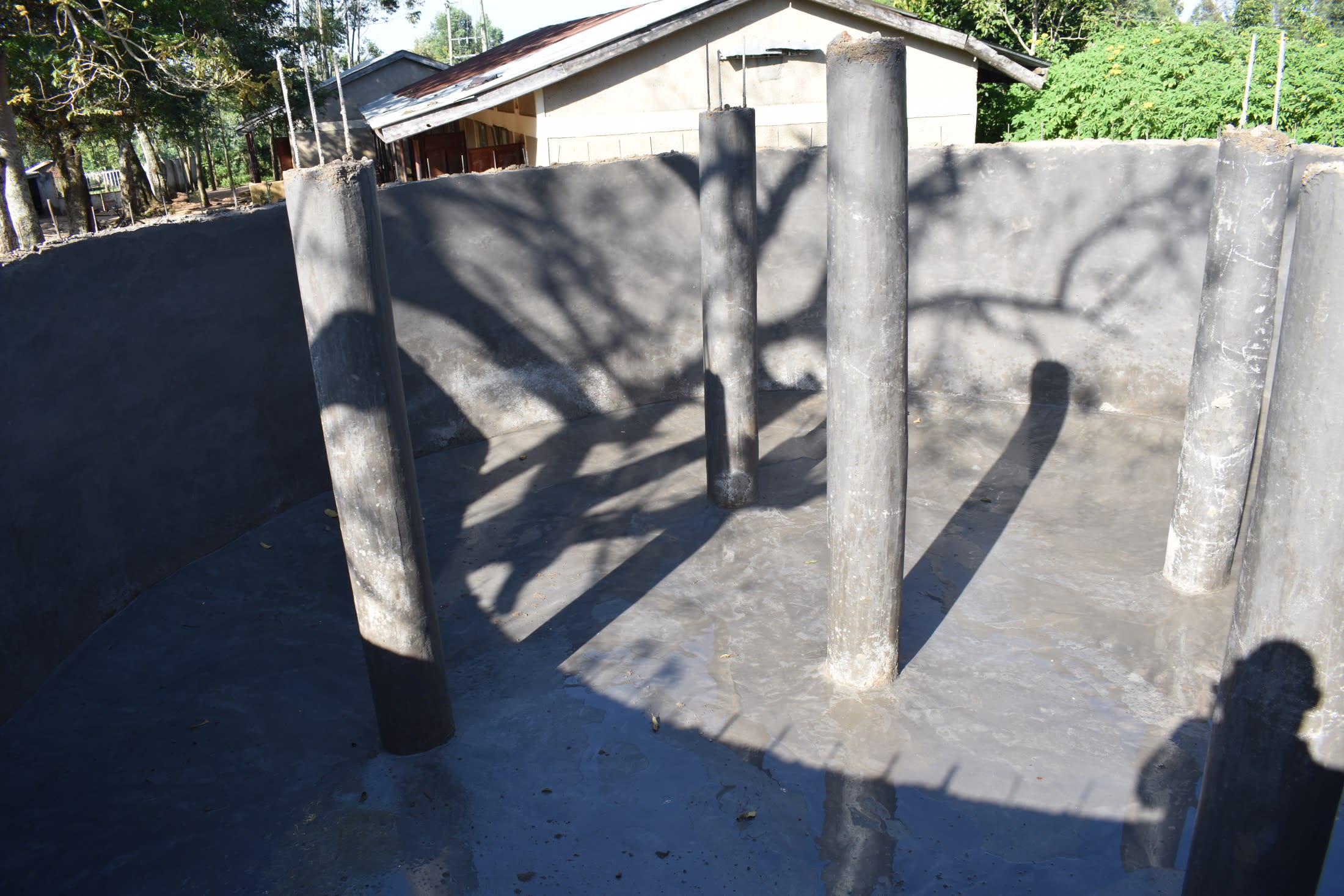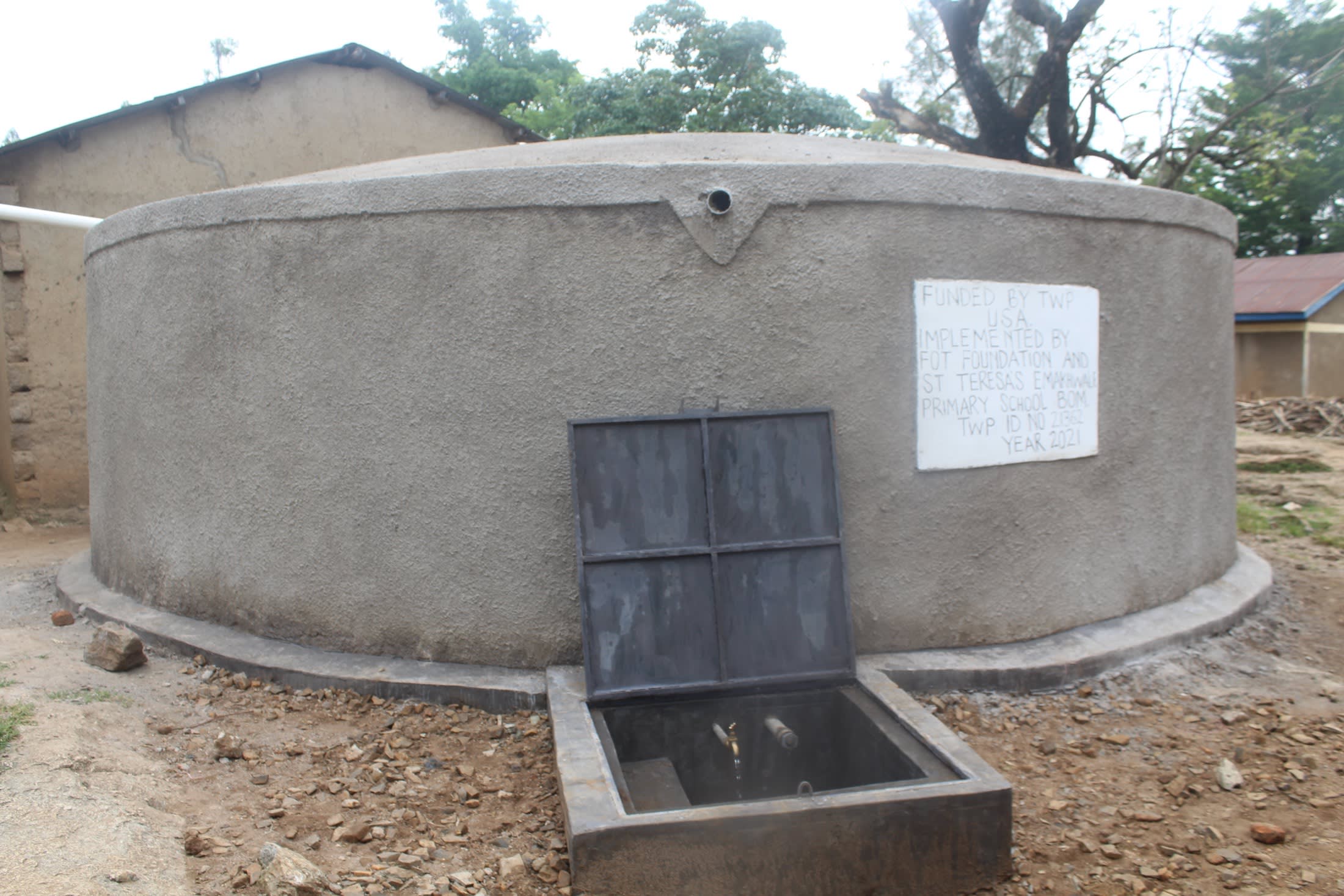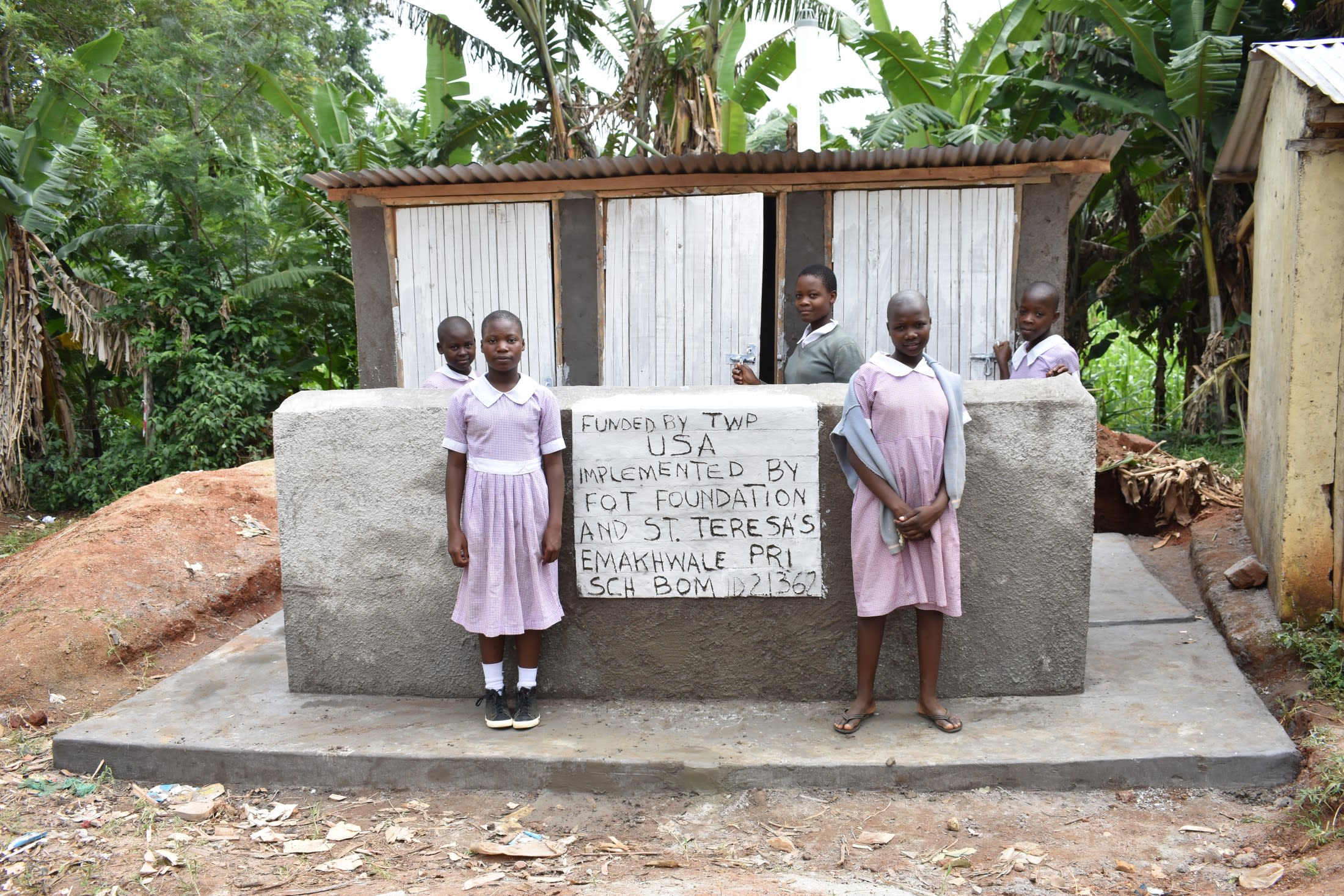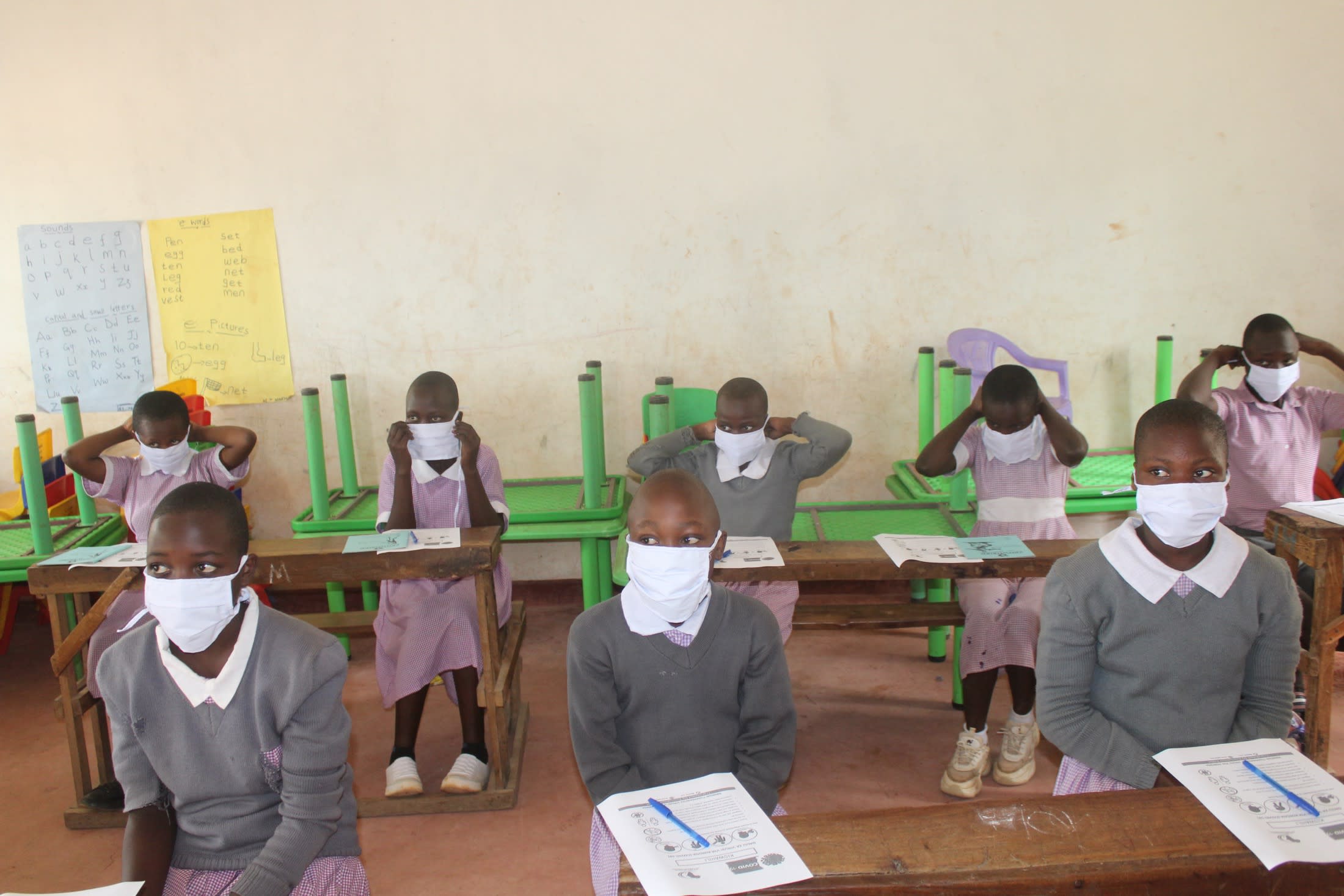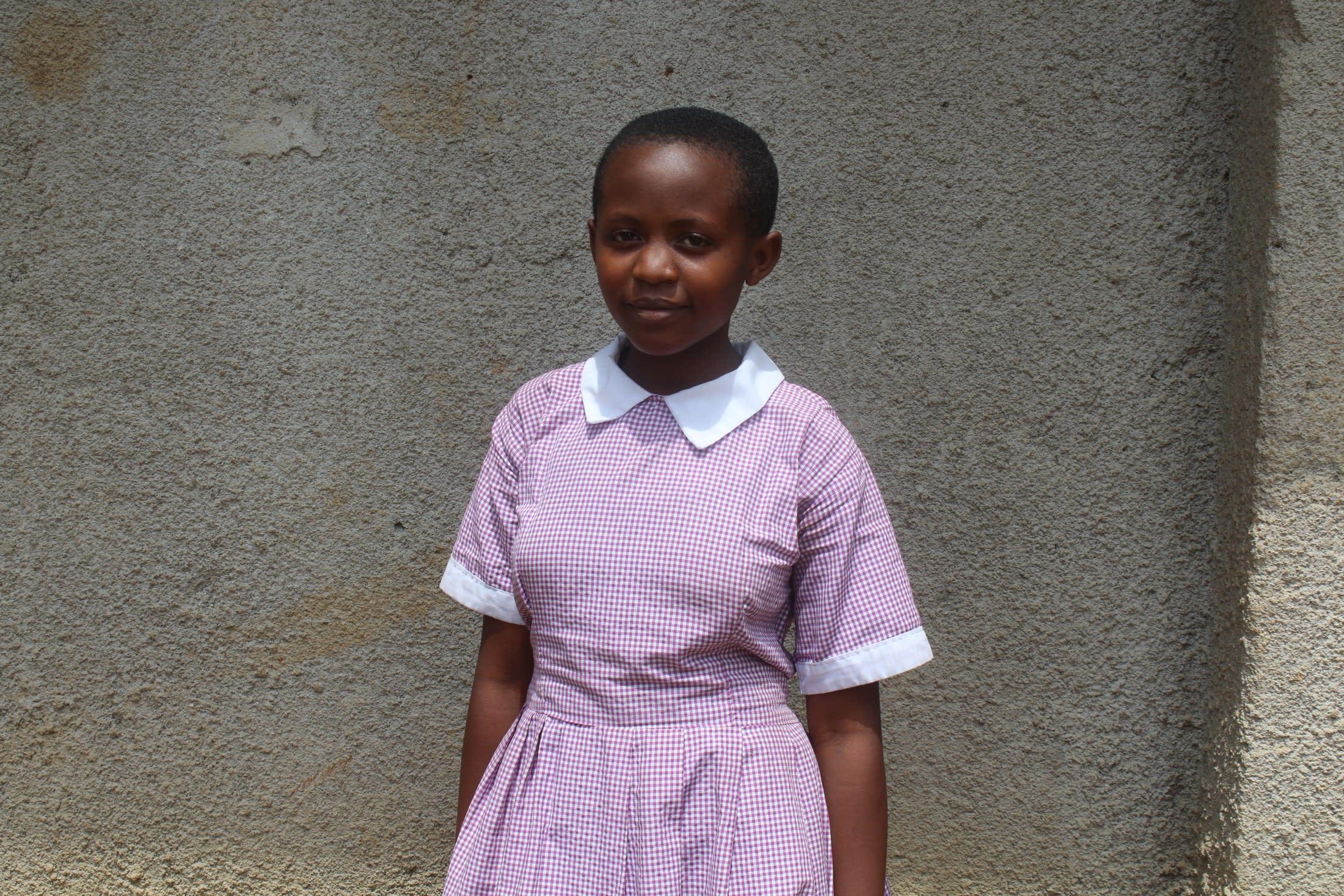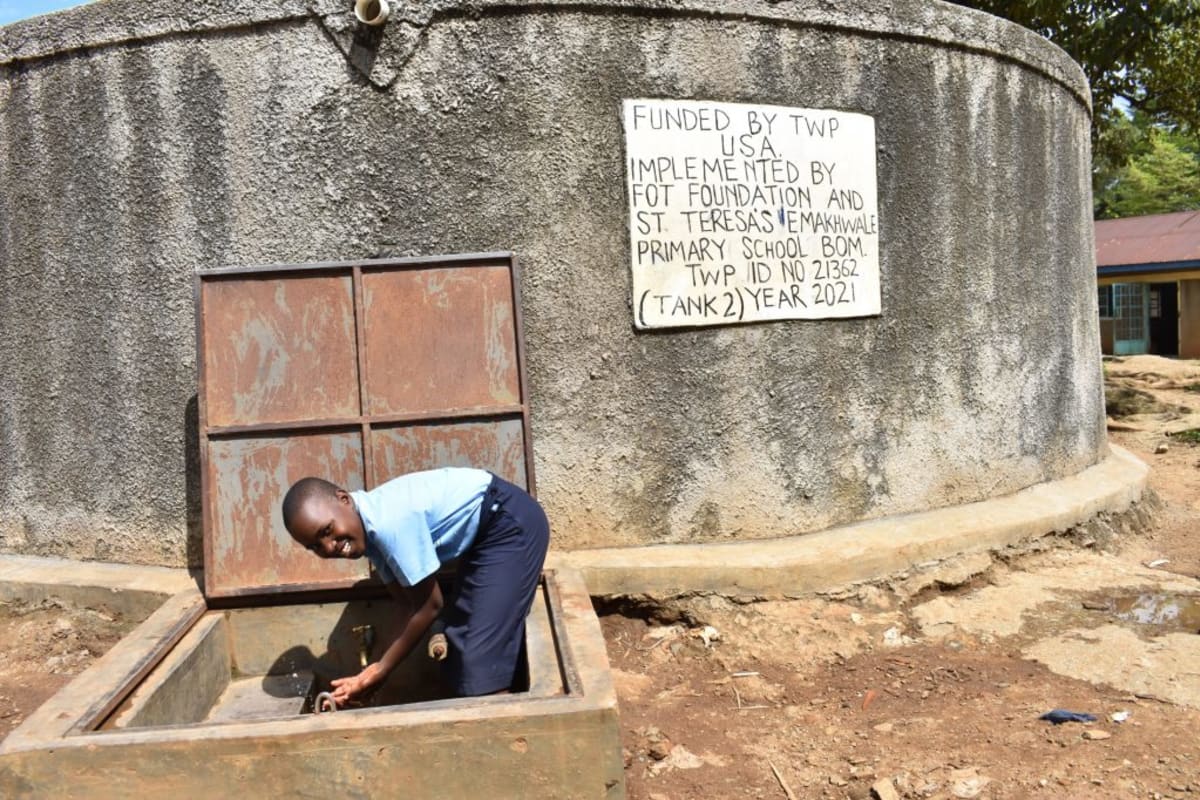St. Teresa Emakhwale Primary School was established in 1984 by the community which donated a piece of land after realizing that their children needed access to formal education. The Catholic church then decided to sponsor the school, formaing a relationship that continues today. Shortly after opening, however, the school was torched down and all the classes burnt down, forcing it to close. In 1987, the school started up once again but this time, the community came together to ensure it serves the purpose it was established to.
The school has been steadily growing and registering good performance since then, attracting a large population of students. Today, the school has a total enrollment of 1,332 students and 33 teachers and staff thanks to the joint efforts of the parents, teachers, and the students themselves.
Despite several decades of education under its belt, the students and teachers at St. Teresa Emakhwale Primary School still face a severe clean water shortage every day. The school patches together several water sources to try to meet their needs, but they still fall short.
When students come to school each morning, they must first show that they have carried water from home which is mainly used for cleaning chores at school. The students are then forced to go fetch water from a protected spring in the community which is some distance away from the school compound. Students must return to the spring at lunchtime and again at games time to fetch more water. Each trip to the spring takes away time students are meant to be in class, sitting down to eat, or enjoying a break from learning.
"Going to the spring, which is far from the school compound, makes me tired most times. We are forced, sometimes, to persevere with thirst while attending classes in the afternoon," said pupil Zarina.
"Personally, I am affected negatively. It pains me seeing students loitering outside the school compound in search of water while other students are in classes reading. And my teachers also drinking the water that we are not sure of its source makes me feel bad," said teacher Wilson Ijakaa.
Since the spring is owned by the community, the school is forced to pay for the water they collect from it. At one point there was a breakdown at the spring that needed repairs, and the school was forced to take charge of the repair work which cost it some good money. Sometimes students are chased away from the spring by community members frustrated by their presence, leaving the students to return to school with empty containers. During the dry season, the school has an even harder time as the community does not allow the students to fetch water since they claim it is their spring and the school should have nothing to do with it.
Students grow increasingly tired throughout the day after carrying full jerrycans to school so many times, costing their focus and attention in class when they return. Some students feel thirsty in the course of the day while classes are in session and then are forced to sneak out of the school to go and drink water from the spring. Sometimes the students get to school late and tired and start their classes late which disrupts their learning for some time.
The alternative water source the school uses is a small plastic rain tank. Students access the tank's water through two taps a few steps away from the tank. Though on campus, the small rain tank never comes close to meeting the needs of such a large student population, and quickly runs dry following each rain. At such a small volume, the tank sits empty through the dry season and leaves the students without water once again.
The sanitation and hygiene situation here also needs to be addressed as the school received a closure notice from the Ministry of Health due to their lack of bathroom facilities and no water available in the school compound. The latrines already on campus are not clean and smell strongly as a result of the students not having enough water to sanitize them routinely. The sanitation facilities are also too few against the number of students, and there is never any water for handwashing.
What We Can Do:
Rain Tanks
Two 75,000-liter rainwater catchment tanks will help alleviate the water crisis at this school by providing a much larger capacity than their small plastic tank to store water from the rainy season. The school will help collect the needed construction materials such as sand, bricks, rocks, and water for mixing cement. We will complement their materials by providing an expert team of artisans, tools, hardware, and the guttering system. Once finished, these tanks will begin catching rainfall used by the school’s students and staff for drinking, handwashing, cooking, cleaning, and much more.
The school and we strongly believe that all of these components will work together to improve standards at this school, which will help lead to better student academic performance and unlock the potential for these students to live better, healthier lives.
Handwashing Stations
The student health club will oversee the two new handwashing stations we will provide and ensure they are kept clean and in working condition. The club leaders will fill the handwashing stations with water daily and make sure they are always supplied with a cleaning agent such as soap or ash.
VIP Latrines
We will construct two triple-door latrine blocks using local materials that the school will help gather. Three doors will serve the girls, while the other three will serve the boys. These new latrines will have cement floors designed to be easy to use and clean. And with a rain tank right on school property, there should be enough water to keep them clean.
Training on Health, Hygiene, COVID-19, and More
We will hold a one-day intensive training session with students, teachers, and parents. This training will cover a wide range of topics, including COVID-19 symptoms, transmission routes, prevention; personal and environmental hygiene; and the operation and maintenance of the rain tank, latrines, and handwashing stations. There will be a special emphasis on handwashing.
Our team of facilitators will use various methods to train, including participatory hygiene and sanitation transformation, and asset-based community development. We will initiate a student health club, which will prepare students to lead other pupils into healthy habits at school and home. We will also lead lectures, group discussions and provide illustrative handouts to teach health topics and promote good hygiene practices within the school, including handwashing and water treatment. We will then conduct a series of follow-up training before transitioning to our regularly scheduled support visits throughout the year.

 Rainwater Catchment
Rainwater Catchment
 Rehabilitation Project
Rehabilitation Project



















